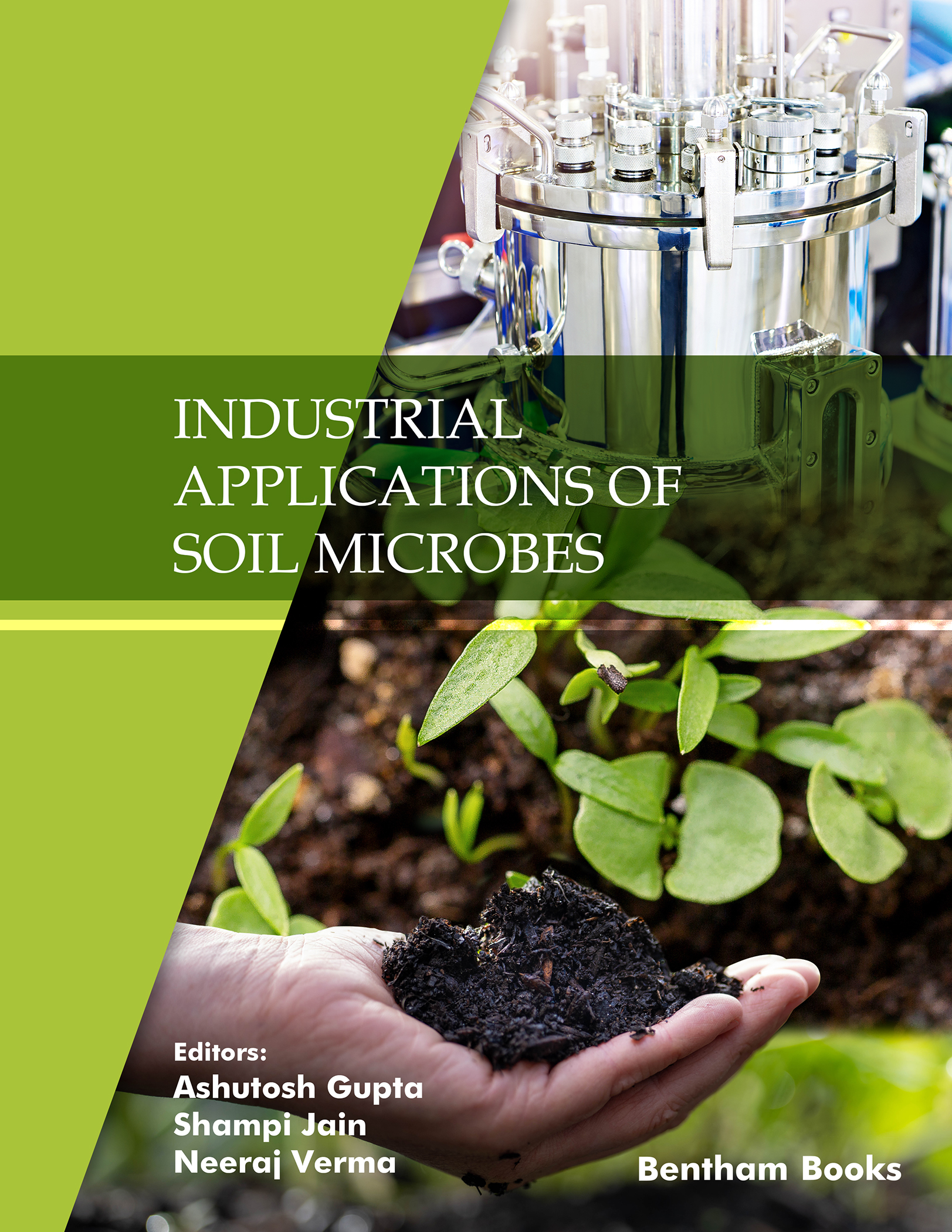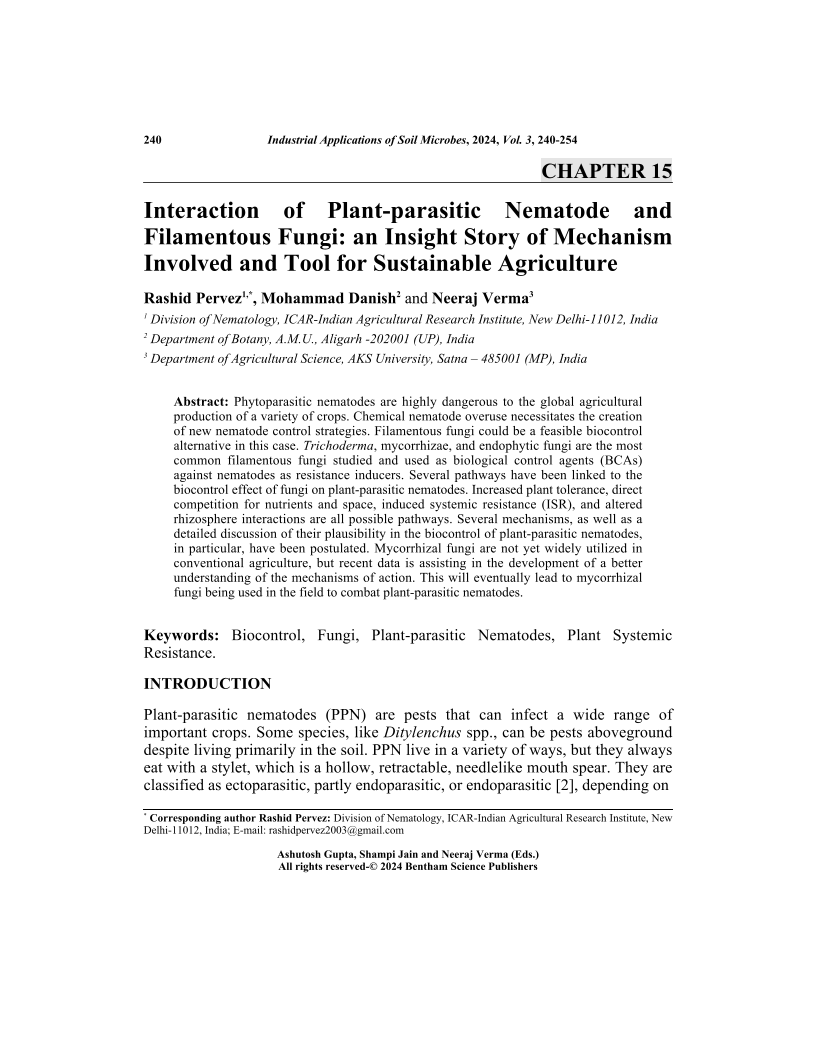Interaction of Plant-parasitic Nematode and Filamentous Fungi: an Insight Story of Mechanism Involved and Tool for Sustainable Agriculture

- Authors: Rashid Pervez1, Mohammad Danish2, Neeraj Verma3
-
View Affiliations Hide AffiliationsAffiliations: 1 Division of Nematology, ICAR Indian Agricultural Research Institute, New Delhi-11012, India 2 Department of Botany, A.M.U., Aligarh -202001 (UP), India 3 Department of Agricultural Science, AKS University, Satna 485001 (MP), India
- Source: Industrial Applications of Soil Microbes , pp 240-254
- Publication Date: April 2024
- Language: English
Interaction of Plant-parasitic Nematode and Filamentous Fungi: an Insight Story of Mechanism Involved and Tool for Sustainable Agriculture, Page 1 of 1
< Previous page | Next page > /docserver/preview/fulltext/9789815079753/chapter-15-1.gif
Phytoparasitic nematodes are highly dangerous to the global agricultural production of a variety of crops. Chemical nematode overuse necessitates the creation of new nematode control strategies. Filamentous fungi could be a feasible biocontrol alternative in this case. Trichoderma, mycorrhizae, and endophytic fungi are the most common filamentous fungi studied and used as biological control agents (BCAs) against nematodes as resistance inducers. Several pathways have been linked to the biocontrol effect of fungi on plant-parasitic nematodes. Increased plant tolerance, direct competition for nutrients and space, induced systemic resistance (ISR), and altered rhizosphere interactions are all possible pathways. Several mechanisms, as well as a detailed discussion of their plausibility in the biocontrol of plant-parasitic nematodes, in particular, have been postulated. Mycorrhizal fungi are not yet widely utilized in conventional agriculture, but recent data is assisting in the development of a better understanding of the mechanisms of action. This will eventually lead to mycorrhizal fungi being used in the field to combat plant-parasitic nematodes.
-
From This Site
/content/books/9789815079753.chapter-15dcterms_subject,pub_keyword-contentType:Journal105

